
Water Purifier
Get Price Quote
Model : Water Purifier Capacity : 20 Ltr Hight : 600 (mm) Gift Box Dim : 305 X 300 X 225 (mm) N.W.G.W : 2.503.01 (kg) Packing : 6 PcsCarton Warranty : 1 Year Warranty

Hot Water Generators
300,000 - 35,000,000 Per Piece
Our company name figures amid top-notch Manufacturers, suppliers, Exporters and Importers of Hot Water Generators from Maharashtra, India. Available with us in a varying capacity of 100000 kcal/ hr to 10,000,000 kcal/ hr, our Hot Water Generators have no match in the market. We, at SMS ENGINEERING SERVICES provide the world class Hot Water Generators at extremely economical prices. All you need is to place orders with us, timely deliveries are promised! More about Hot Water GeneratorsWe offer Hot Water Generators from M/s Shree Laxmi Engineering Pvt. Ltd. for Hotel, Hospitals, Resorts, Motels, Housing Societies, etc. Our generators accept wide variety of fuel such as LDO, Furnace Oil, HSD, Natural Gas, Coal, Agro Waste, and Wood. Additionally, we deliver an out let temperature of up to 210 Deg C.
Best Deals from Water Treatment Plant
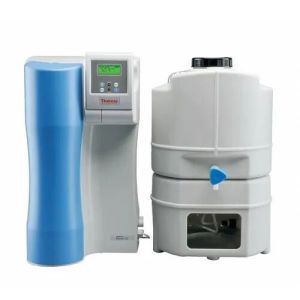
water purification system
Get Price Quote

UV-C Disinfection Conveyor Tunnel
379,000 Per Unit
1 Unit (MOQ)
uv-c tunnel is a conveyor-based disinfection solution used for disinfection of material before entering a premise features & benefits: lamp type – induction (480 watt) uv-c lamp at bottom of conveyor ensuring 3600 coverage of material high wattage based germicidal dosage to ensure quick disinfection within 20 seconds sensor based mechanism to auto start the disinfection cycle robust design with weight carrying capacity up to 75 kgs* comfortable tunnel size of 24” (width) x 22” (height)* low maintenance delivered fully assembled for plug and use *specifications mentioned are for standard product which can be customised as per application & customer need application: disinfect incoming material at manufacturing facilities disinfect belongings (bags, purses, lunch box) of employees / customers entering - o offices, factories o malls, supermarkets, retail chains o hospitals o hotels, restaurants o airports, railway stations, bus stations o educational institutes o gated communities o temples/churches/mosques and other places of worship.
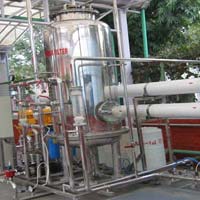
Water Filter
Get Price Quote
Water filters are relatively inexpensive and improve the overall taste of your tap water as well as the smell, and appearance. Many filters will also remove some harmful chemicals found in your drinking water. Currently there isn't a better way of ensuring your drinking water and cooking water is as healthy as possible for you and your family. Compare a glass of bottled water to a glass of tap water. Look at the color, clarity and then smell both of them. Chances are, your tap water will be cloudy, and may smell of bleach.

Pure Water Distribution System
Get Price Quote
We are offering pure water distribution system. pure water distribution system is utilized in pharmaceutical unit to distribute the purified & distilled water. This distribution, monitoring and piping loops are used for usp. Purified water, water for injection (wfi) and pure steam, from the generation point, to point of use. Pure water distribution system consists of storage tank , recirculation pump, s.s. 316 l piping with user points at various locations & the instrumentation to monitor / control the system.
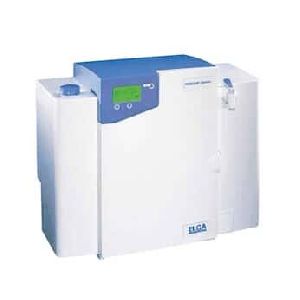
water purification system
Get Price Quote
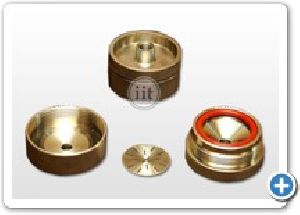
water treatment equipments
Get Price Quote
Supplier & Manufacturer of Water Treatment Equipments & SDI Kit. Our product range also comprises of Filter Holders & Housing, Pharmaceutical Machines.6 Features: 47 mm SDI kit. Moc : SS 316 L Gasket food grade silicon

Ultrapure Water Purification System
Get Price Quote
Integral is a unique combination of optimized water purification and monitoring technologies. It allows, in a single device, both pure (Type 2) and ultrapure (Type 1) water to be produced directly from potable water.Provides users with complete control over all water purification steps and the final water quality. Allows installation of a comprehensive water purification chain in a minimal amount of space. Eliminates the constraints of centralized water stations and their distribution loops (complexity, heavy maintenance, prolonged downtime, contamination).

RO Water Purifier
Get Price Quote
Ganesh Enterprises is well known sales and service provider of Kent RO and Aqua Grand RO Water purifiers. Both RO Water purifiers are well established brand of market in this domain. We are doing from sales to installation a complete process to get a hassle free service to our customers. These RO Water Purifiers are available in different sizes, specifications and prices. Customers can buy them from us according to their usage and requirements. Features: Company sealed packed products Home delivery and installation Available in all sizes and specifications declared by company

water filtration
Get Price Quote
water filtration, Filter Bags, Non Woven Geotextile
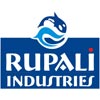
B Nova RO
Get Price Quote
B.nova RO + Online Storage Water Purifier (Compact) BARC GOVT OF INDIA Developed 0.0001 RO Membrane technology & 0.01 Ultra Filtration Membrane Technology. Filtration Stages: Stage 1:- Limestone granules cartridge +2 micron filter net: a unique feature in Ro water purifiers which cleans the of water acidic presence and brings taste Stage 2:- BARC Govt. of India developed 0.01 Micron Ultra filtration Membrane technology:- Removes bacteria , harmful micro-organism and all other particles up to 0.01 micron and increase life of RO membrane Stage 3:- BARC Govt. of India developed 0.01 Micron Ultra filtration Membrane technology:- Removes bacteria , harmful micro-organism and all other particles up to 0.01 micron and increase life of RO membrane Stage 4:- BARC Govt. of India developed 0.0001 Micron RO Membrane technology:- process hard water brackish/POTABLE to pure drinking water by removing Salt Stage 5:- TDS Adjustable – TDS adjustable valve enables to control the content natural minerals in purified water Stage 6:- Acid wash Activated Post Carbon Cartridge: Removes color and foul odor SALIENT FEATURES: • In build storage Tank : capacity of 8 liter • Fully automatic operation • Body made of unbreakable poly carbonate material for long life • Pressure Gauge to increase Life of RO system • Heavy Duty Booster Pump with 100 GPD & 125 PSI • Lime stone Cartridge Giving taste to Water • UF 0.01 Micron Membrane to increase Life of RO system,0.0001 RO Membrane • BARC( GOVT. OF INDIA Developed )0.01 micron Ultra Filtration membrane technology and 0.0001 RO Membrane RO technology • Six stages Water Purification RO system • Gives pure drinking water from Municipal Corporation supply, Borewell, Tanker & Well • UF + RO + TDS Adjustable + Mineral Technology • The Uniquely Developed Pressure Gauge Monitors the Blockage created in the process of Cleaning Water from Dust, Mud, Rust, fungus & Bacteria, Which Blocks the Nano Micron Holes. This Stops the Water Flow & increases the Pressure on the Motor. Purification capacity Approx 10-15**/hour Storage Tank Capacity 8 liter Minimum inlet Water Pressure 0.3 kg/cm2 Input voltage 160-300V AC RO membrane 75GPD Net Weight 12 kgs Filter Cartridges Limestone, 2 nos UF Membrane, Ro 0.0001 micron membrane Activated post carbon

aeration tank
Get Price Quote
aeration tank
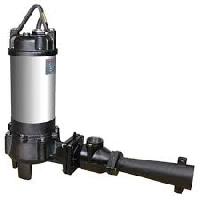
Submersible Jet Aerator
Get Price Quote
Submersible Jet Aerator, Submersible Dewatering Pumps

Submersible Jet Aerator
Get Price Quote
Submersible Jet Aerator, Submersible Dewatering Pump

Industrial Ro Plant
Get Price Quote
Industrial Ro Plant
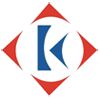
Effluent Treatment Plant
Get Price Quote
We are offering effluent treatment plant ( waste water treatment ). water & waste water treatment systems & solutions our environmental impact on the earth has exceeded the planet’s life sustaining abilities as well as its self recovery capabilities. Komal understands the need to integrate the process plant, with economical & efficient water & waste water management systems & solutions for your metal finishing & industrial applications. we are truly a one stop source for plant automation with built in value added pollution control, resulting in multiple benefits including compliance with pollution control laws & regulations, along with optimization of capital investment. Be assured to get perfect solutions that work, from a friendly, knowledgeable team who are honest, dependable and proven in the metal finishing, electroplating and allied industries. We are with you long after the job is done. latest technology for effluent treatment with zero discharge & recovery pollution control systems – our product portfolio ● control panels, plc automation ● dosing control equipments ● tanks for effluent collection, storage and treatment ● reactions tanks ● dosing tanks ● oil water separators ● filter press systems ● clariflocculator ● gravitational settling clarifiers ● pressure sand filter ● activated carbon filter ● dm plants ●reverse osmosis ● sludge treatment - sludge dewatering , sludge dryers, centrifuges ● filter media ● pumps ( dosing pumps, centrifugal pumps, metering pumps, screw pumps, effluent discharge pumps, etc) ● agitators & industrial mixers ● blowers ● electrical equipments ● instrumentation for process control - "hanna, usa" range of water testing & treating equipments – rota meters, ph, orp & conductivity meters ● valves - gate, globe, butterfly, diaphragm, ball , pressure release , vacuum release ● level switches ● piping systems - valves, fittings and piping in pp, pvc, hdpe, carbon steel, etc & fitting. waste water recovery systems for plating, phosphating and pcb industry - profit through effluent recycling ● waste minimization ● chemical recovery ● acid recovery ●trivalent chrome purification ● nickel recovery ● carbonate removal ● cleaner recovery offering superior technologies and engineering, with "simplicity of design" waste water treatment chemicals for effluents from surface conditioning process metal finishing process acid pickling and brightening copper plating process nickel plating process chrome plating process zinc plating process tin & tin lead alloy plating other areas of surface finishing ● hydrochloric acid ● sulphuric acid ● sodium bi sulphite ● ferric sulphate ● ferric chloride ● sodium sulphide ● quick lime ● polyelectrolyte’s ● sodium hydroxide ● others waste water treatment consultancy komal, as well as supplying plant and equipment, is able to offer services based on its expertise in relation to a broad range of issues. We can produce: process and instrumentation drawings layout drawings emphasizing the ergonomics of the plant a diagnosis of your existing treatment plant an improvement plan in anticipation of tighter discharge limits areas of expertise chemical and physico-chemical processes for the treatment of metal complexes. zero discharge concept whenever possible. cyanide oxidation processes. chromium reduction techniques. heavy metals precipitation. evaporation (atmospheric and vacuum, heat pump and mvc). membrane technology. ion exchange resin. settlement systems. coagulation and flocculation systems. permanent media filtration. komal has the best designs & solutions for air pollution control also. process description for electroplating wastewater treatment electroplating wastewater comes from surface plating operations where the metal is dipped in an electroplating solution of various types of metals and then rinsed. typical plating includes brass, nickel, cadmium, zinc, silver, copper, and gold. Electroplating wastewater is typically from washing, rinsing and batch dumps and is at a low ph of ~3-5 and contains soluble forms of the various metals. In order to remove soluble metals from the wastewater it must first be made insoluble. The insoluble metal is then coagulated, flocculated and clarified by sedimentation. the typical method to reduce and remove soluble electroplating metals from wastewater is as follows: stage 1– precipitation and coagulation: ph is raised from ~3 to 8.5 with the ph controller using caustic while adding a coagulant such as ferric chloride. Testing of the wastewater may confirm that a coagulant is not needed. A “pin floc” is developed indicating the metal is insoluble. Some applications have plating enhancing chemicals present, emulsifiers and such that may require more sophisticated high performance coagulants to break the bonds and allow the metal to precipitate. stage 2 - flash mix: the wastewater with its precipitated pin floc is introduced to the flash mix zone where a polymer flocculent is added. This stage maximizes flocculent dispersion throughout the coagulated wastewater. stage 3 - flocculation: the wastewater is now introduced to the slow mix zone to agglomerate the pin floc into larger rapid settling particles. clarifier, inclined plate: the flocculated wastewater is introduced into the clarifier where the settling particles land on the inclined plates and are directed downward and into the sludge chamber. The clarified treated water then exits the top of the clarifier and flows downstream to sewer or further treatment if necessary. clarifier sludge handling: the resulting clarifier waste sludge is periodically removed from the clarifier at a slow rate and sent to the sludge holding tank where it further thickens and accumulates a batch for disposal or processing in a filter press. sludge dewatering: the thickened clarifier sludge is allowed to accumulate sufficiently to provide a full batch for the filter press. The filter press is pumped full of the sludge until it is full. The filter press is then emptied of the “cake” which is a semi solid of approximately 20-35 % solids. Sludge cake is high in phosphate and should be disposed of according to environmental regulations. applications: electroplating shops are found in typically two categories, captive and independent shops. Some industries operate their own captive, in house electroplating operation while others outsource to an independent operation. typical industries include: • electroplating shops, captive or independent • automotive suppliers, trucks, motorcycles etc – metal to rubber suspension and body parts • jewellery mfg • machine tool mfg. • metal forming such as stamped metal parts that require plating of various types. • building materials, cadmium plated nuts, bolts etc. . . . • aerospace • wire forming - nails, screws etc • appliance makers • electronics – gold and silver plating of electrical connectors etc. environmental guidelines for electroplating industry industry description and practices electroplating involves the deposition of a thin protective layer (usually metallic) onto a prepared surface of metal, using electrochemical processes. The process involves pre-treatment (cleaning, degreasing, and other preparation steps), plating, rinsing, passivating, and drying. The cleaning and pre-treatment stages involve a variety of solvents (often chlorinated hydrocarbons, whose use is discouraged) and surface stripping agents including caustic soda and a range of strong acids, depending on the metal surface to be plated. The use of halogenated hydrocarbons for degreasing is not necessary as water based systems are available. In the plating process, the object to be plated is usually used as the cathode in an electrolytic bath. There are three main types of plating solutions: are acid or alkaline solutions and may contain complexing agents such as cyanides. waste characteristics any or all of the substances used in electroplating (such as acidic solutions, toxic metals, solvents, and cyanides) can be found in the wastewater, either via rinsing of the product or due to spillage and dumping of process baths. The solvents and vapours from hot plating baths result in elevated levels of volatile organic compounds (vocs) and in some cases, volatile metal compounds (when may contain chromates). Approximately 30 percent of the solvents and degreasing agents used can be released as vocs when baths are not regenerated. the mixing of cyanide and acidic wastewaters can generate lethal hydrogen cyanide gas and this must be avoided. The overall wastewater stream is typically extremely variable (1 liter to 500 liters per square meter of surface plated) but usually high in heavy metals (including cadmium, chrome, lead, copper, zinc, and nickel), cyanides, fluorides, and oil and grease, all of which are process dependent. Air emissions may contain toxic organics (such as trichloroethylene and trichloroethane). cleaning or changing of process tanks and the treatment of wastewaters can generate substantial quantities of wet sludges containing high levels of toxic organics andor metals. pollution prevention and control plating involves different combinations of a wide variety of processes and there are many opportunities to improve upon the traditional practices in the industry. The following improvements should be implemented where possible: changes in process • replace cadmium with high quality corrosion resistant zinc plating. Use cyanide-free systems for zinc plating where appropriate. In those cases where cadmium plating is necessary, use bright chloride, high alkaline baths or other alternatives. However, alternate complexing agents to cyanides may cause problems in wastewater treatment for they may result in the release of heavy metals. • use trivalent chrome instead of hexavalent chrome: acceptance of the change in finish needs to be promoted. 373 374 electroplating industry • give preference to water-based surface cleaning agents, where feasible, instead of organic cleaning agents, some of which are considered toxic. • regenerate acids and other process ingredients, whenever feasible. reduction in drag-out and wastage • minimize drag-out by effective draining of bath solutions from the plated part by measures such as making drain holes in bucket type pieces, if necessary. • allow dripping time of at least 10 to 20 seconds before rinsing. • use fog spraying of parts while dripping. • maintain the density, viscosity, and temperature of the baths to minimize dragouts. • place recovery tanks before the rinse tanks (which then provide make-up for the process tanks). The recovery tank provides for static rinsing with high dragout recovery. minimizing water consumption in rinsing systems it is possible to design rinsing systems to achieve 50-99% reduction of traditional water usage. Testing is required to determine the optimum method for any specific process but proven approaches include: • agitation of rinse water or work pieces to increase rinsing efficiency. • multiple counter current rinses. • spray rinses (especially for barrel loads). management of process solutions • recycle process baths after concentration and filtration. Spent bath solutions should be sent for recovery and regeneration of plating chemicals, not discharged into wastewater treatment units. • recycle rinse waters (after filtration). • regularly analyze and regenerate process solutions to maximize useful life. • clean racks between baths to minimize contamination. • cover degreasing baths containing chlorinated solvents when not in operation to reduce losses. Spent solvents should be sent to solvent recyclers and the residue from solvent recovery properly managed (e.g., blending with fuel and burning in a combustion unit with proper controls for toxic metals). target pollution loads a key parameter is the water use in each process and systems should be designed to reduce water use. Where electroplating is routinely performed on objects with known surface area in a production unit, water consumption of no more than 1.3 liters per sequence meter plated (lm2) for rack plating and 10 lm2 of surface area plated for drum plating should be achieved. The recommended pollution prevention and control measures can achieve the following target levels: • cadmium plating should be avoided. In cases where there are no feasible alternatives, a maximum cadmium load in the waste of 0.3 grams for every kilogram (kg) of cadmium processed is recommended. • at least 90% of the solvent emissions to air must be recovered by the use of an air pollution control system such as a carbon filter. • ozone depleting solvents (such as chlorofluorocarbons and trichloroethane) are not to be used in the process. treatment technologies segregation of waste streams is essential due to the dangerous reactions which can occur: strong acidcaustic reactions can generate boiling and splashing of corrosive liquids; acids can react with cyanides and generate lethal hydrogen cyanide gas. In addition, segregated streams that are concentrated are easier to treat. air emissions exhaust hoods and good ventilation systems protect the working environment but the exhaust streams should be treated to reduce vocs (using carbon filters which enable the reuse of solvents) and heavy metals to acceptable levels before venting to the atmosphere. Acid mists and vapours should be scrubbed with water before venting. In some cases, voc levels of the vapours are reduced by 375 electroplating industry combustion (and energy recovery) after scrubbing adsorption, or other treatment methods. liquid effluents cyanide destruction, flow equalization and neutralization, and metals removal are required, as a minimum, for electroplating plants. Individual design is necessary to address the characteristics of any specific plant but there are a number of common treatment steps. For small facilities, the possibility of sharing a common wastewater treatment plant should be considered. Cyanide destruction must be carried out upstream of the other treatment processes. If hexavalent chrome (cr+6) occurs in the wastewater, then this is also usually pre-treated to reduce it to a trivalent form using a reducing agent (such as a sulphide) followed by precipitation and sedimentationfiltration. the main treatment processes are equalization, ph adjustment for precipitation, flocculation, and sedimentationfiltration. The optimum ph for metal precipitation is usually in the range of 8.5-11 but this depends on the mixture of metals present. The presence of significant levels of oil and grease may affect the effectiveness of the metal precipitation process. Hence, the level of oil and grease affects the choice of treatment options and the treatment sequence. It is preferred that the degreasing baths be treated separately. Flocculating agents are sometimes used to facilitate the filtration of suspended solids. Pilot testing and treatability studies may be necessary. Final adjustment of ph and further polishing of the effluent may also be required. Modern wastewater treatment systems use ion exchange, membrane filtration, and evaporation to reduce the release of toxics and the quantity of effluent that needs to be discharged. These can be designed to have a closed system with a minor bleed stream. solid and hazardous wastes treatment sludges contain high levels of metals and these should normally be managed as hazardous waste or sent for metals recovery. Electrolytic methods may be used to recover metals. Sludges are usually thickened, dewatered, and stabilized using chemical agents (such as lime) before disposal which must be in an approved and controlled landfill. High costs of proper sludge disposal are likely to become an increasing incentive for waste minimization. emission guidelines emission levels for the design and operation of each project must be established through the environmental assessment (ea) process, based on country legislation and the pollution prevention and abatement handbook as applied to local conditions. The emission levels selected must be justified in the ea and acceptable to miga. the following guidelines present emission levels normally acceptable to the world bank group in making decisions regarding provision of world bank group assistance, including miga guarantees; any deviations from these levels must be described in the project documentation. the guidelines are expressed as concentrations to facilitate monitoring. Dilution of air emissions or effluents to achieve these guidelines is unacceptable. all of the maximum levels should be achieved for at least 95% of the time that the plant or unit is operating, to be calculated as a proportion of annual operating hours. air emissions a 90% recovery of the quantity of vocs released from the process is required. 376 electroplating industry liquid effluents electroplating plants should use closed systems where feasible or attain the following effluent levels. effluents from the electroplating industry parameter maximum value milligrams per liter (mgl) ph 7 - 10 total suspended solids 25 oil and grease 10 arsenic 0.1 cadmium 0.1 chromium (hexavalent) 0.1 chromium (total) 0.5 copper 0.5 lead 0.2 mercury 0.01 nickel 0.5 silver 0.5 zinc 2 total metals 10 cyanides (free) 0.2 fluorides 20 trichloroethane 0.05 trichloroethylene 0.05 phosphorus 5

Water Treatment Plants
Get Price Quote
Water Treatment Plants, Ss Tanks, SS Pressure Tubing

industrial dewatering machine
Get Price Quote
industrial dewatering machine, grab dredger, Dredging Equipment

Water Treatment Plants
Get Price Quote
Water Treatment Plants, personal safety equipment, Face Mask, Fire Suit